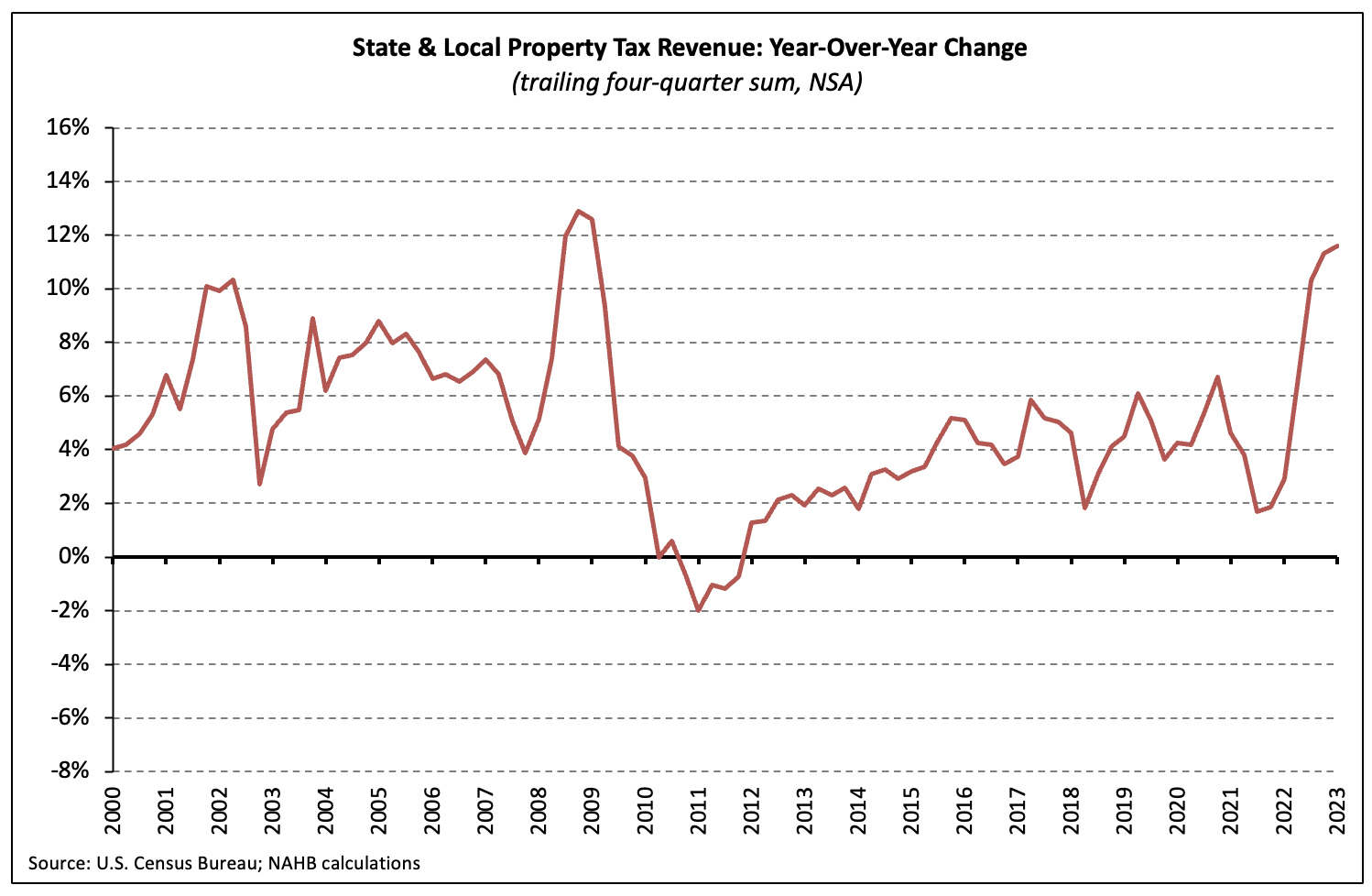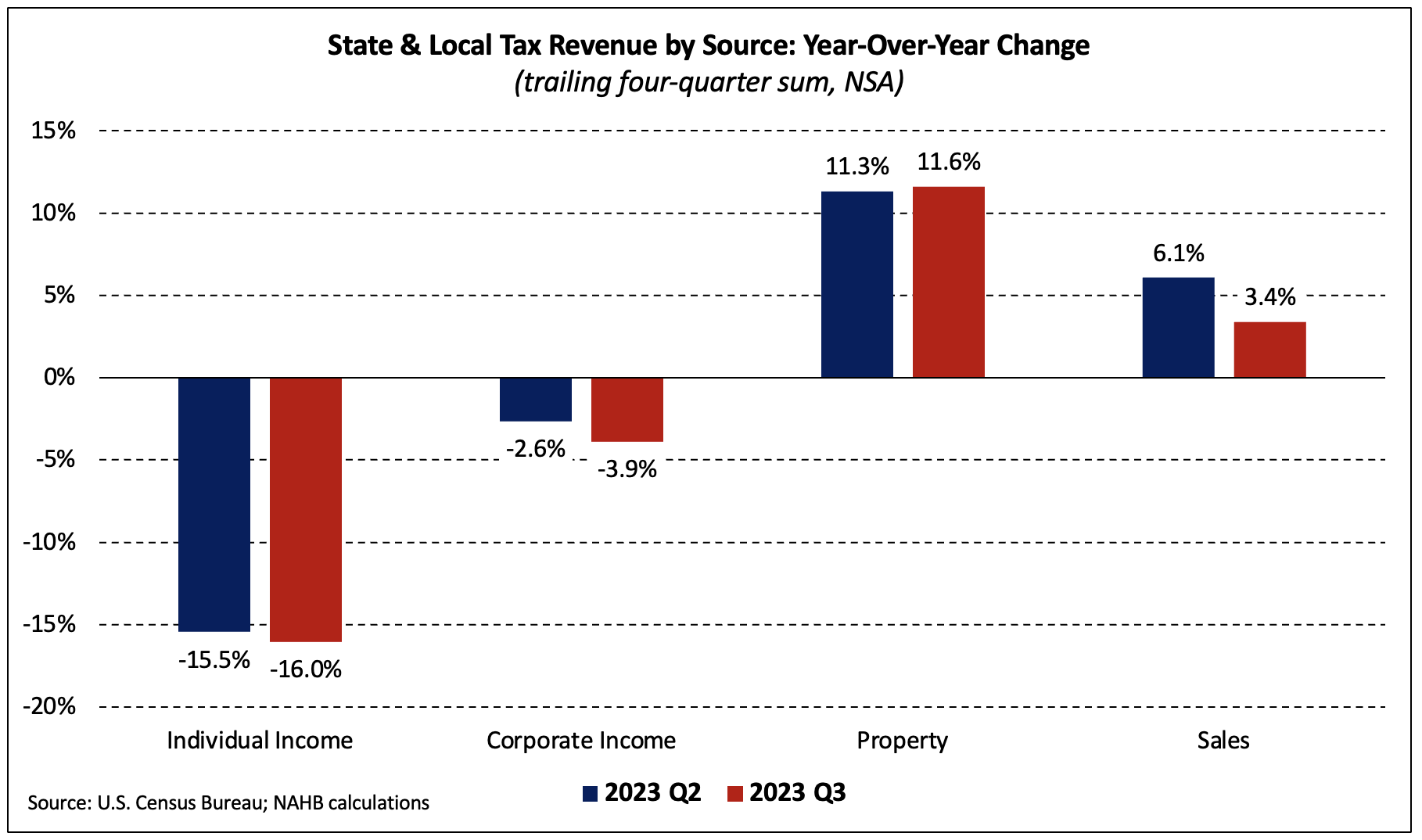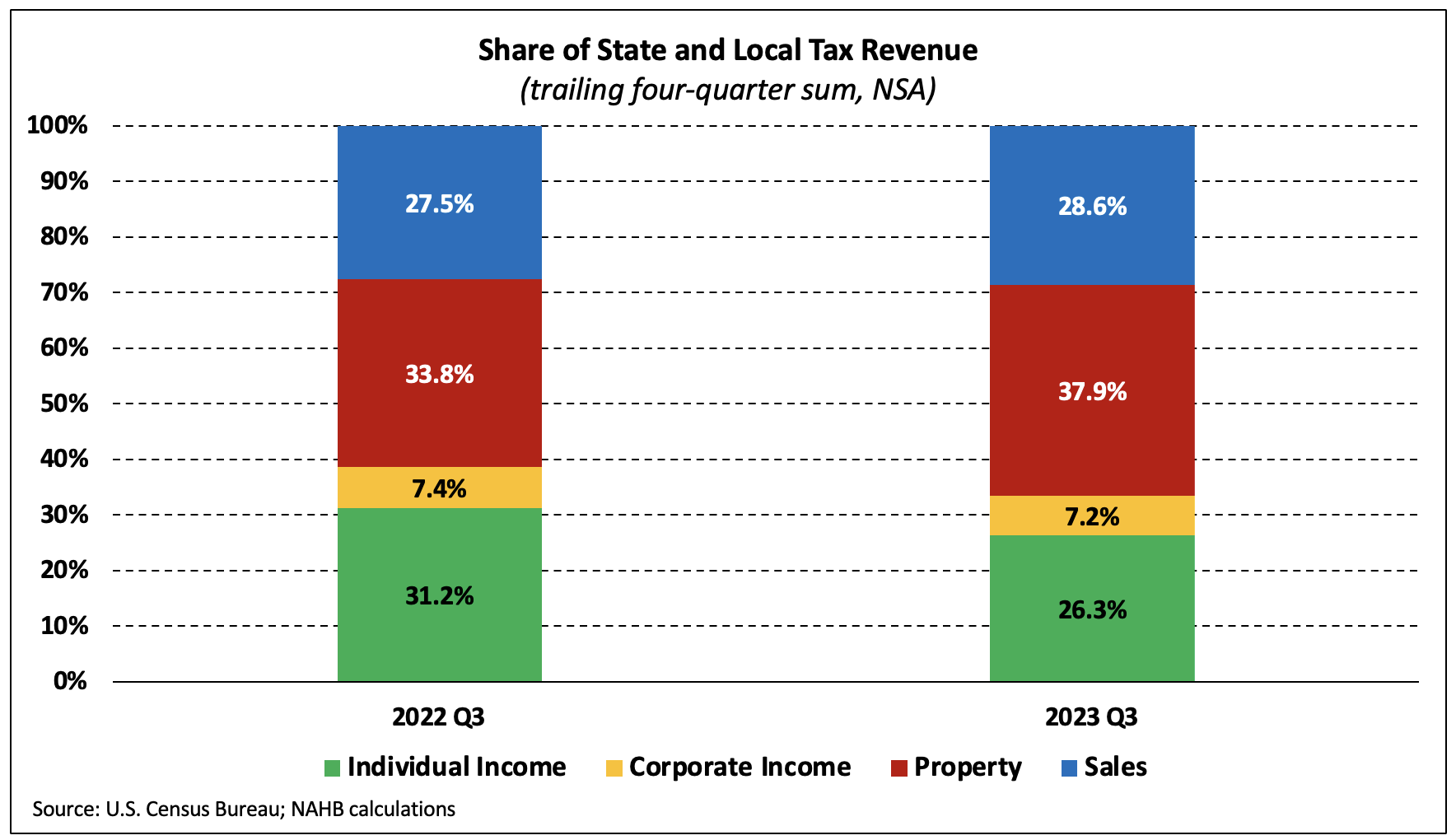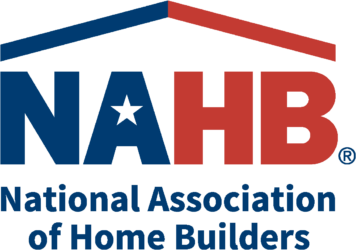NAHB analysis of the Census Bureau’s quarterly state and local tax data shows that $129 billion in taxes were paid by property owners in the third quarter of 2023 (not seasonally adjusted).[1] In the four quarters ending Q3 2023, state and local governments collected $757 billion of property tax revenue—an 11.6% increase over Q3 2022.
The year-over-year growth rate of property tax revenue (trailing four-quarter total) has climbed from 1.7% to 11.6% since Q1 2022. Growth has exceeded 10% for three consecutive quarters for the first time since 2009. Gains have been driven by rising home value assessments, which can lag market prices by one to two years.

Property taxes accounted for 37.9% of state and local tax receipts for the four quarters ending Q3 2023, up slightly from 37.7% the prior quarter. The increase resulted from the combination of higher property and sales tax receipts with a 16.0% drop in individual income tax revenue and a 3.9% decline in corporate income tax collections.

In terms of the share of total receipts, property taxes were followed by sales taxes (28.6%), individual income taxes (26.3%), and corporate taxes (7.2%). Individual income tax receipts accounted for their smallest share since 2011.

The share of property tax receipts among the four major tax revenue sources naturally changes with fluctuations in non-property tax collections. Non-property tax receipts including individual income, corporate income, and sales tax revenues, by nature, are much more sensitive to fluctuations in the business cycle and the accompanying changes in consumer spending (affecting sales tax revenues) and job availability (affecting aggregate income). In contrast, property tax collections have proven relatively stable, reflecting the long-run stability of tangible property values as well as the effects of lagging assessments and annual adjustments.
[1] Census data for property tax collections include taxes paid for all real estate assets (as well as personal property), including owner-occupied homes, rental housing, commercial real estate, and agriculture. Owner-occupied and rental housing units combine to make housing’s share the largest among these subgroups.
Discover more from Eye On Housing
Subscribe to get the latest posts sent to your email.

Do you have this data broken down by state?